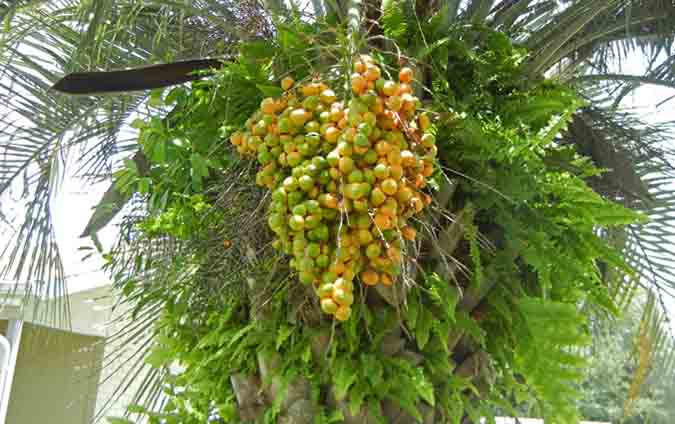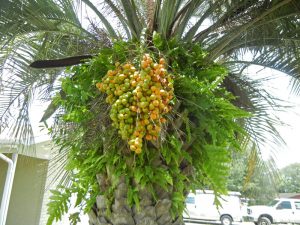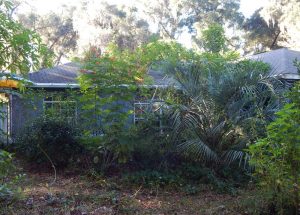A friend asks if a beautiful palm has edible fruit:
“There is a palm tree in the front yard of a house we bought in Ocala about 18 months ago. This year, it produced large clumps of a yellow-orange fruit that has a tough skin and a large seed inside each one. Pictures are attached.
Can you tell us what this is, and how to protect and use it? (The fruits spoil almost a quickly as they ripen.)”
I wrote back:
“That’s a pindo palm! Great fruit. We stew them into an absolutely delicious jelly with sugar to taste and jar them. Best flavor ever. Also makes a great pancake syrup. You can also eat the fruit fresh. In the past, people have made wine from them as well. Butia capitata is the Latin name.”
They really are delicious. And it’s fun to say “Butia capitata.” Try it three times fast—I’ll wait.
I planted two in my North Florida food forest because I was so impressed with the flavor of the fruit. You can see one of them here:
Pindo palm fruit are not great off the tree, but the jelly … incredible. Coconut, pineapple, passion fruit—you taste notes of different tropical delights in it. Very, very good.
I once harvested about 50 pounds from the Ocala agricultural extension offices and made jelly with them. The fruits often just fall on the ground unused and are available for the asking.
And the aroma of the fruit is intoxicating.
“On the short walk from the pool to the house we rent in the ‘low country’ in South Carolina, Winter picked a berry from the tons of these little palm trees in the community and said, ‘Mom, smell this.’ Well, I’ve played that game before, and it’s not always fun. I was cautious at first, but then quickly began oohing and aahhing over the fragrance that in an instant transports you to the warm sunny place of your dreams. You cannot prevent the immediate inclination to hold in your hand a drink blended with ice and topped with a frilly paper umbrella.”
You’ll also find a recipe for pindo palm jelly in her post.
Pindo palms are often sold in ornamental nurseries across the Deep South. Their silvery foliage and cold hardiness make them very popular. I got my two trees from Home Depot and have encouraged many food-forest enthusiasts to add a few to their plans. You won’t regret it.
David The Good is a Grow Network Change Maker, a gardening expert, and the author of five books you can find on Amazon: Compost Everything: The Good Guide to Extreme Composting, Grow or Die: The Good Guide to Survival Gardening, Totally Crazy Easy Florida Gardening, Create Your Own Florida Food Forest, and Push the Zone: The Good Guide to Growing Tropical Plants Beyond the Tropics. Find fresh gardening inspiration at his website TheSurvivalGardener.com and be sure to follow his popular YouTube channel.











COMMENTS(8)
Another plant for my wish list. Thanks, David.
The neighbors have one next door here in SW Florida and my Chocolate lab spends hours under it stuffing herself with those berries. If she’s not eating those, she’s under the Barbados cherry tree sniffing out those treats.
I have taken a gardening class from a man who know where to forage for these but will not give up his location! I am going to try to find my own to forage from and get one started on my property
Thanks for sharing. I had never heard of these and it sounds like they’d be a great addition to our food Forest.
I inherited several hundred of these beautiful palms when I moved to N.FL. two years ago. I enjoy making jellies and sorbet and friends of mine make wine. I heard you can also roast the seeds for coffee, and if necessary for food, the heart of the plant can be eaten. Does anyone have information about this they could share? I would greatly appreciate the information!
will these palms grow in zone 9, California?
I am in zone 8b and they grow great. They are plentiful in the zone 9a region just to the south of me in Gainesville, FL and Ocala, FL.
Where’s the recipe?